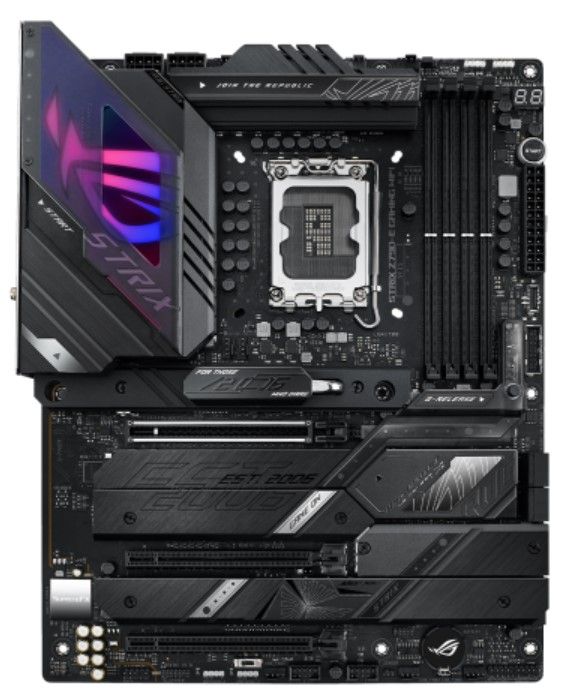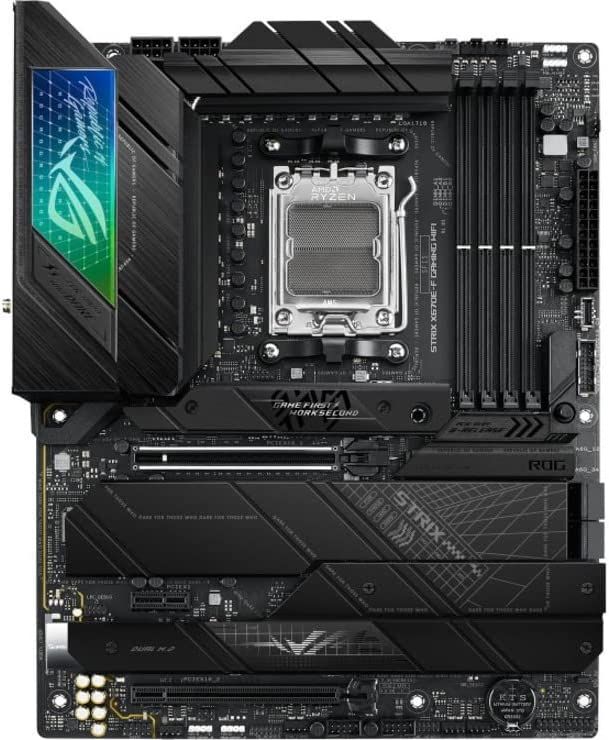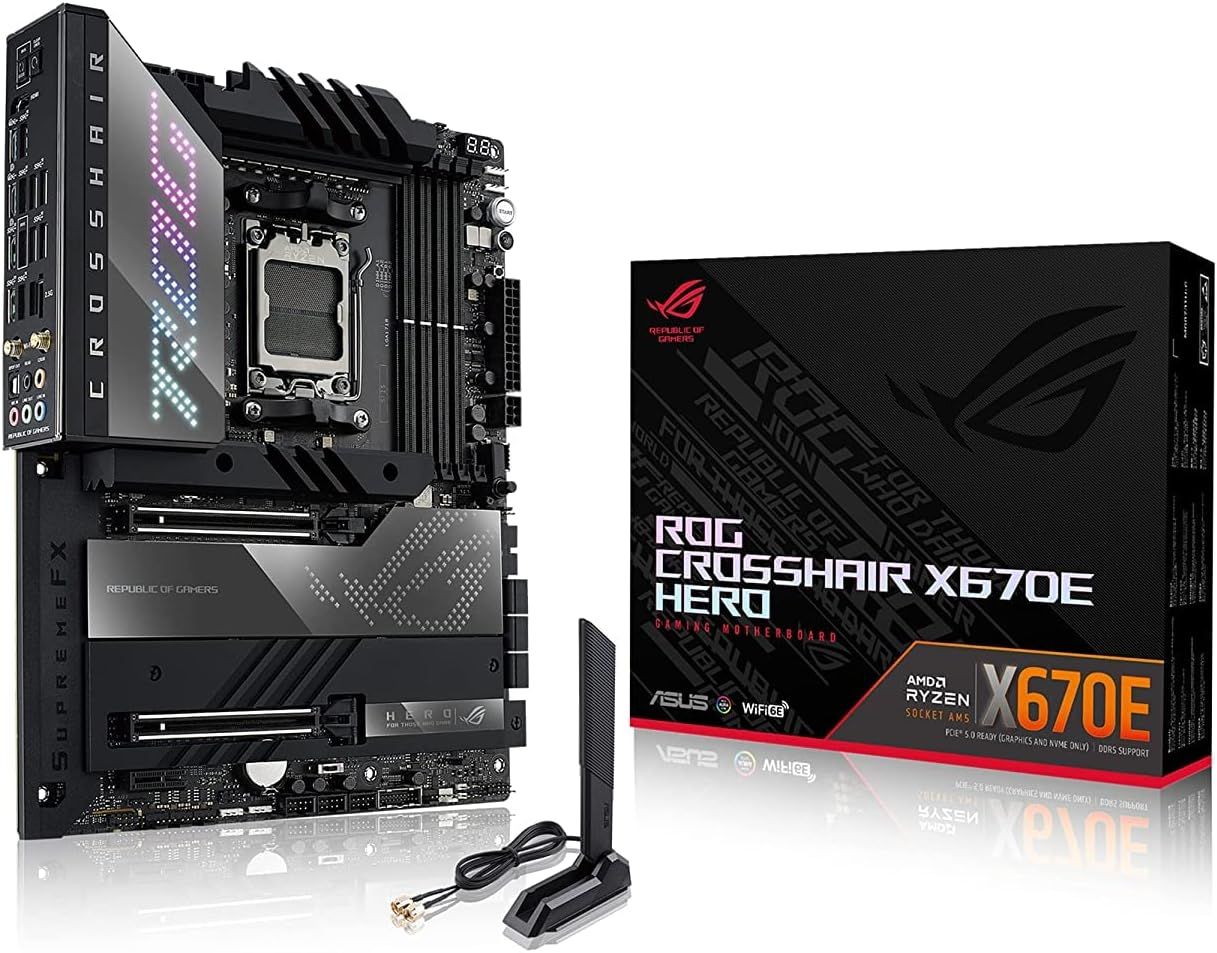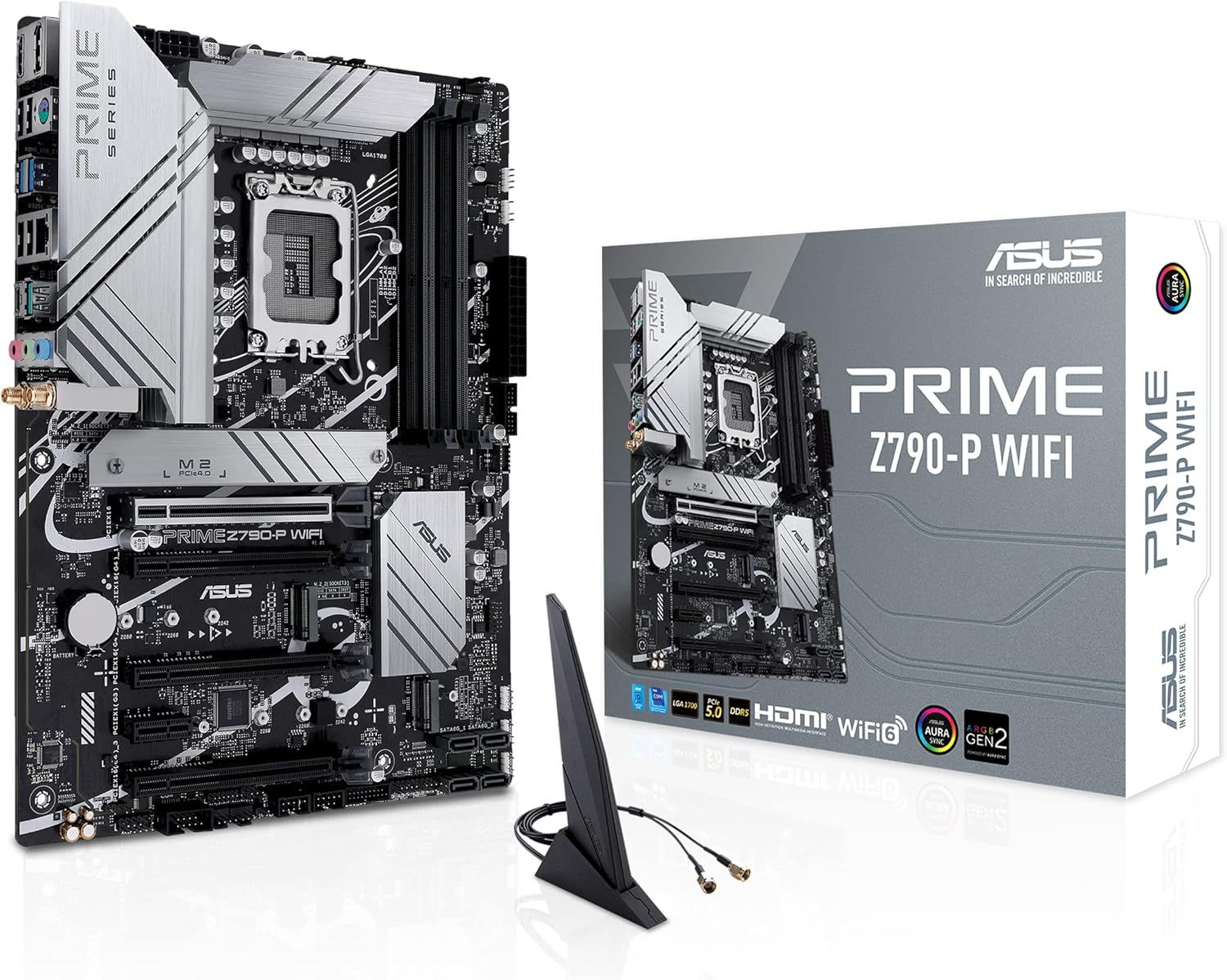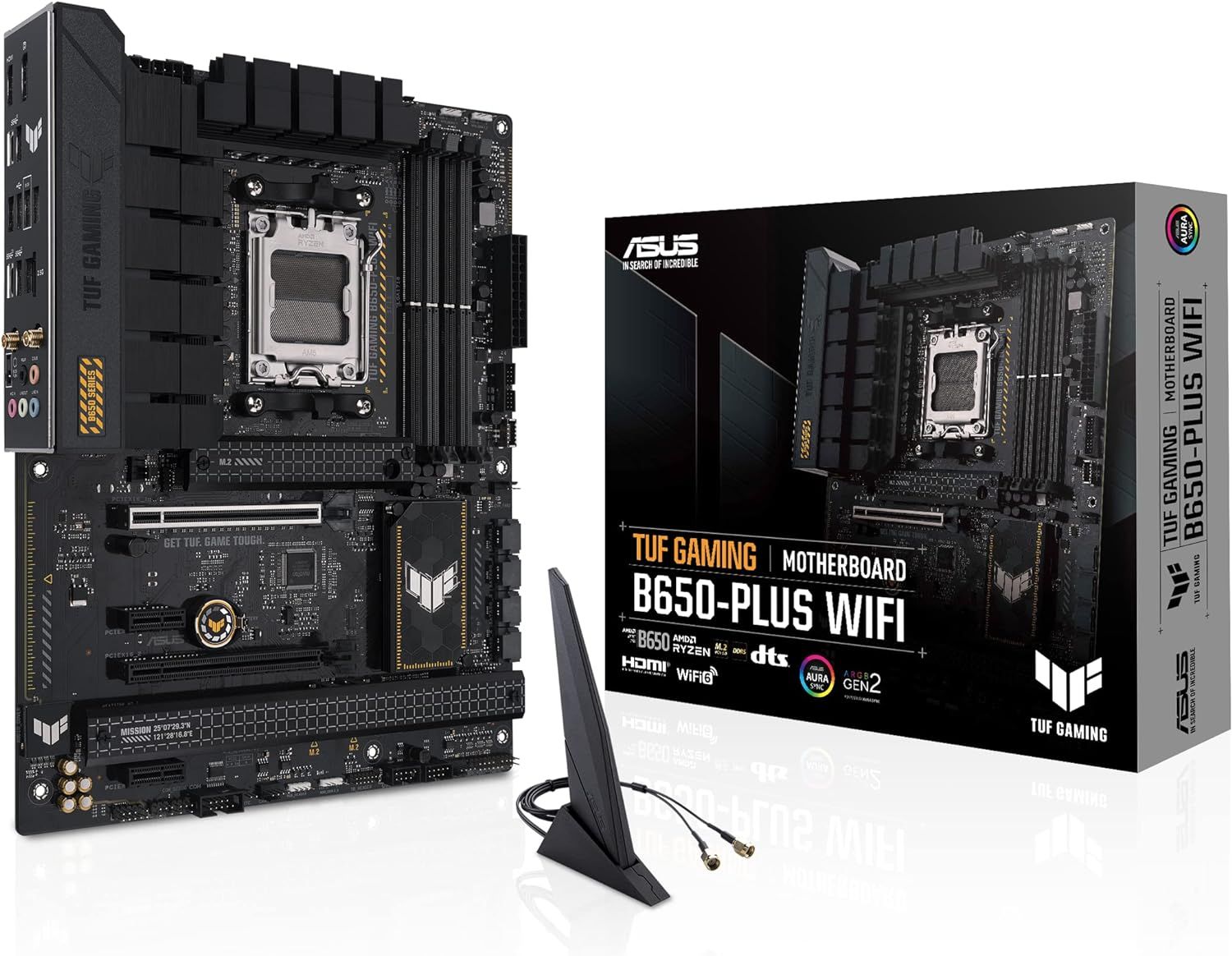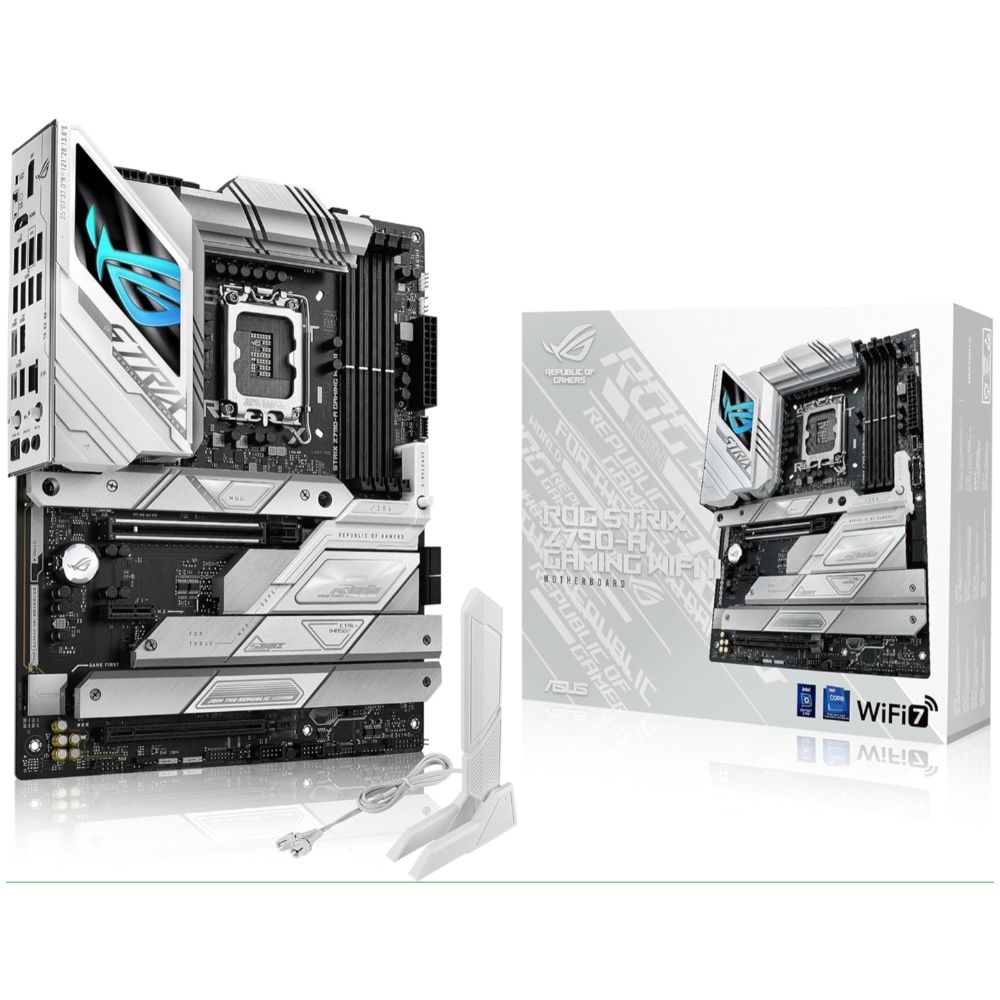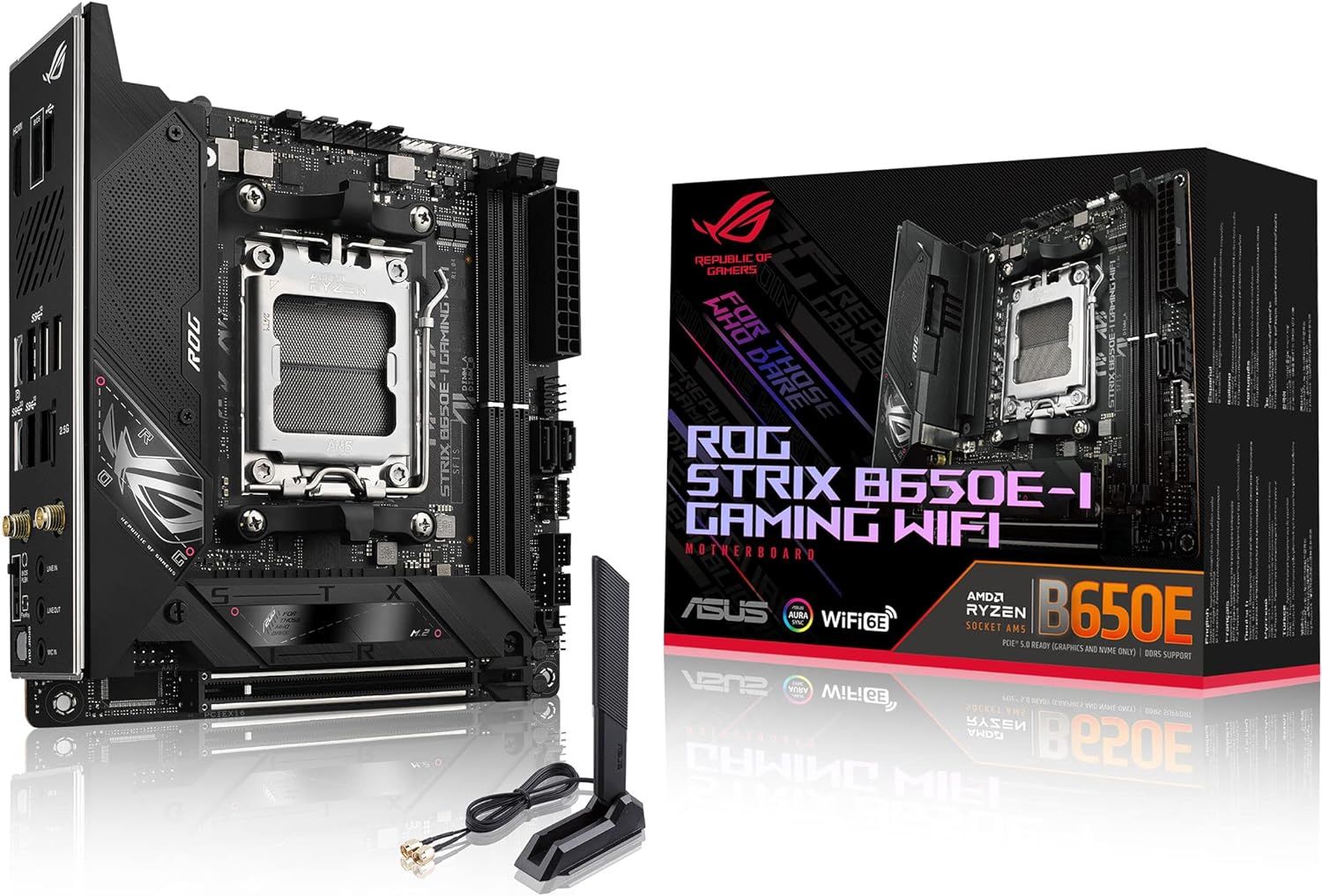Choosing the right motherboard is key when building a gaming rig. The motherboard plays a big role in determining the computer's limitations and capabilities, such as USB ports, audio outputs, storage ports, memory type, CPU socket, and more. As such, selecting the ideal motherboard is important when it comes to upgrading or building a gaming PC because the end result will affect the stability, performance, and compatibility of the entire system.
That said, ASUS makes some of the best motherboards, with options for various budgets and needs. The company has several standout models that offer great features, speed, and value. While ASUS makes motherboards for various purposes besides gaming, the ROG, TUF, and Prime motherboards are designed with gaming in mind. The ROG series includes the more premium offerings, while the TUF and Prime series are designed for more budget-oriented shoppers.
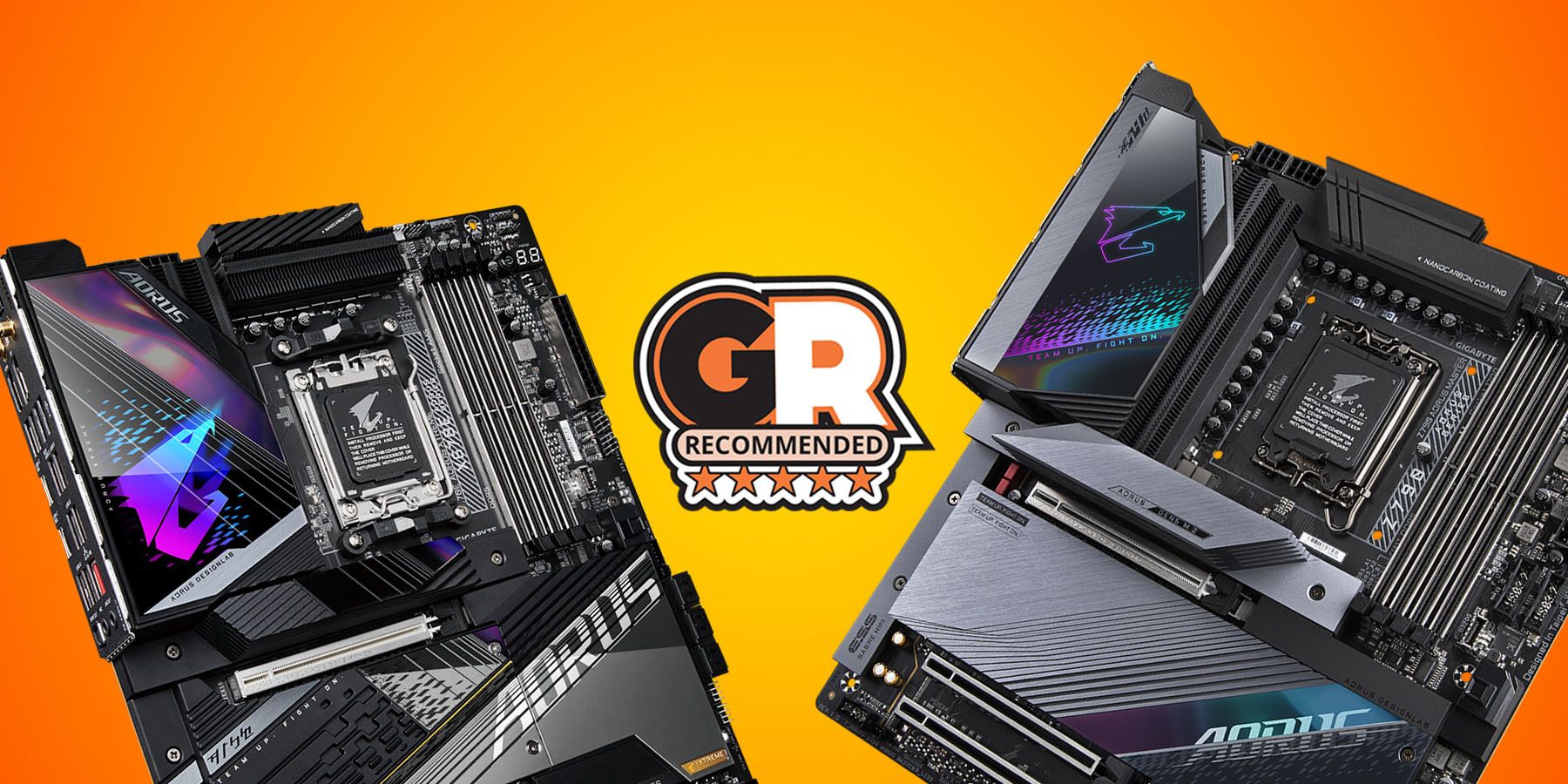
Best Gigabyte Motherboards for Gaming in 2024
Gigabyte is one of the most reliable vendors when it comes to motherboards. These motherboards offer unparalleled features for every dollar spent.
Whether one wants a fully loaded flagship or just needs solid fundamentals without breaking the bank, gamers can't go wrong with ASUS motherboards. And with its reputation for quality and innovation, any ASUS motherboard will serve gamers well for years to come.
Factors for Choosing an ASUS Motherboard for Gaming
To help gamers make the best decision when choosing the best ASUS motherboard for their needs, let’s first brush through some of the factors they should consider when shopping for one.
- Socket: The socket determines which CPUs one can use with a particular motherboard. On the Intel side, gamers can find sockets such as LGA1700, LGA1200, and others, while on the AMD side, the socket types are AM3, AM4, and the latest socket, AM5.
- Connectivity: Most modern gaming motherboards come with a lot of connectivity options. Networking is a big deal, and most mid-range to high-end motherboards now have Bluetooth, Wi-Fi, and Ethernet.
- Power Delivery: Power delivery is extremely important for stability and the better the VRM will be, the easier it will be to maintain higher clock speeds and overclocking.
- Upgrade Options: Upgrades could include new CPUs, the latest DDR5 memory, or PCI-E Gen 5 compatibility with SSDs or GPUs.
- Other Features: When it comes to gaming PCs, it's not just about making sure everything works together. Having a strong cooling system, hard drives, and room for more than one graphics card are awesome extras.
Game ZXC's Picks for the Best ASUS Motherboards in 2024
When it comes to overclocking, the Z790 chipset is the way to go. Whether users want to overclock an Intel Core i5, i7, or i9 CPU from any of the 12th, 13th, or 14th gen family, the ROG Strix Z790-E Gaming Wi-Fi stands as a terrific choice for enthusiasts. With its excellent power delivery, users won't have any problems with stability and can experiment with multipliers as much as they wish. The Z790-E doesn't just give a big power phase count but also provides plenty of onboard options that can come in handy when overclocking or in the case of any malfunctions.
There is a dedicated Q-Code for advanced users, Q-LEDs for different components, and multiple onboard buttons to get started with the overclocking journey. The board doesn't stop there and brings impressive connectivity features, great component support, and a highly efficient cooling solution as well. Wi-Fi 6, 2.5G LAN, high-bandwidth USB ports, and PCI-E Gen 5.0 support are just some of the connectivity options available on the ROG Strix Z790-E Gaming Wi-Fi. It should be noted that only the first PCIe x16 slot and the primary M.2 slot are 5.0 compatible. Users can also find Bios Flashback and the Clear CMOS button in case they need to bypass the power button on the PC case.
The ASUS ROG Strix X670E-F Gaming Wi-Fi is an exceptional motherboard for gamers using AMD's AM5 socket. It features the powerful X670E chipset and a solid VRM setup, which helps it support any of AMD's latest CPUs, including the Ryzen 7950X3D. Under the hood, it's loaded with overclocking tools, thanks to the 16+2 power stage VRM that can deliver steady and reliable power for overclocking most AMD Ryzen 7000 series processors.

The Best CPU Coolers in 2024
Modern CPUs often require powerful and sustained cooling to maximize their overclocked performance. Here are some of Game ZXC's best picks!
The I/O and networking options include Bluetooth 5.2, Wi-Fi 6E, and 2.5G Ethernet, covering all the connectivity bases for players. The cool part is that out of the four M.2 slots, two support PCIe 5.0 speeds. Plus, there's a PCIe 5.0 x16 slot for GPUs and two additional PCI-E slots for different types of expansion cards. Like the Intel version, there are Clear CMOS and BIOS Flash buttons right on the board to help reset or upgrade the BIOS easily.
The ROG Maximus Z790 Dark Hero is a fancy and expensive motherboard, built to squeeze the most power out of the top-tier Intel Core processors. It has dark black colors, gray touches, and excellent RGB lighting on the I/O section. The VRM and M.2 heatsinks have stylish designs, especially the big M.2 heatsink with the ROG logo. The motherboard even has a backplate covering almost everything, making the Dark Hero stand out from other high-end boards.
The Z790 Dark Hero boasts a sophisticated 20+1+2 VRM which makes it ideal for overclocking and is capable of handling the flagship Intel CPUs like the Core i9-14900K without breaking a sweat. There are five M.2 slots for SSDs, one running at PCIe 5.0 through the CPU, and the rest are controlled by the chipset and run at Gen 4.0 speeds. With those big heatsinks, the Dark Hero seems ready for PCIe 5.0 drives. The rear I/O is impressive, too, with two Thunderbolt 4 ports and six audio jacks. The motherboard has robust power delivery and cooling to handle high-end CPUs and GPUs. Integrated Wi-Fi 7 and 2. 5G LAN keeps users connected with incredibly fast internet, while loads of USB and RGB headers let creativity run wild.
The ROG Crosshair X670E Hero is stunning to look at and has impressive performance to boot. What makes this motherboard stand out is the RGB ROG logo on the I/O zone. The lighting can be controlled via Aura Sync software and there are several lighting effects to choose from. The lights can also be synced with compatible ROG peripherals.
Apart from boasting an overkill VRM and ample connectivity options, it brings several handy utilities to help users unlock their system's full potential. Boasting 18 VCore power phases, it is very capable of handling overclocking. It's best to go with a flagship Ryzen 7000 CPU if users are going with this motherboard, as simply throwing a $200 CPU won't do justice to this board's capabilities.
The next noteworthy feature is its connectivity, which includes high-bandwidth USB Type-C ports. While many high-end motherboards do come with the latest-gen USB Type A and Type C ports, they are typically not available in abundance and are limited to 20Gbps of speed. On the X670E Hero, there are two USB Type-C Gen2x2 and two USB4 Type-C ports with the latter offering up to 40Gbps.
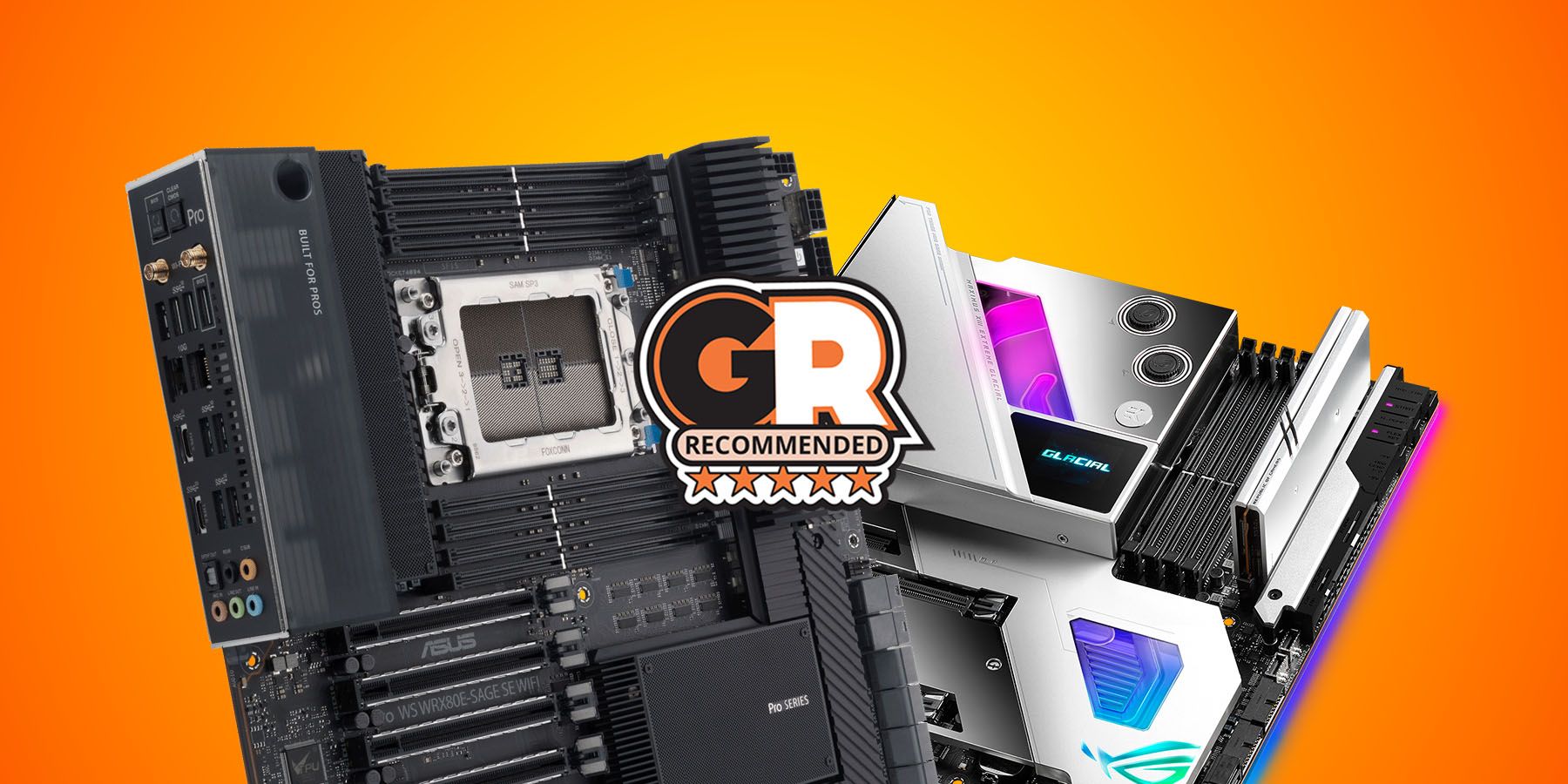
The Best EATX Motherboards for 2024
This guide describes the best EATX motherboards for 2024 to help anyone make informed choices when purchasing such a device.
The onboard features are excellent too. There are Q-Code, and Q-LEDs as well as multiple buttons for powering on/off the system, overclocking, and controlling the BIOS. Furthermore, the bottom location features a dedicated ROG water cooling zone, which makes it perfect for custom water loops.
Asus' Prime series is aimed at budget-oriented users who want the best features without breaking the bank. For Intel CPU owners, the Prime Z790-P is what users should opt for if they want adequate features and component support for under $250. The motherboard doesn't have RGB lighting or insanely strong power delivery, but it has everything users may need to complete a mid-range gaming build. With a 14+1 power stage VRM, it is ideal for overclocking mid-range processors like a Core i5 14600K or similar. The grooved heatsinks will make sure the VRM gets sufficient cooling to maintain voltage stability.
The M.2 connector also has a small shield that enhances both thermals and aesthetics. Coming to component compatibility, it is one of the rare budget boards that come with 5x PCI-E slots in total, including 4x PCI-E x16 and 1x PCI-E x1 slots for expansion cards and GPUs. While the primary one supports 5.0 speed natively, the rest are Gen 4.0 and Gen 3.0. As for storage, there are 3x M.2 connectors and 4x SATA ports.
While the X670 chipset offers better component support, the B650 isn't bad either. Fortunately, Asus has a wide array of B650 motherboards aimed at different requirements and budgets. Finding the best budget Asus motherboard isn't an easy task when there are dozens of options with various chipsets, but the TUF B650 Plus Wi-Fi is something users should look for if they need overclockability, good connectivity, and aesthetics.
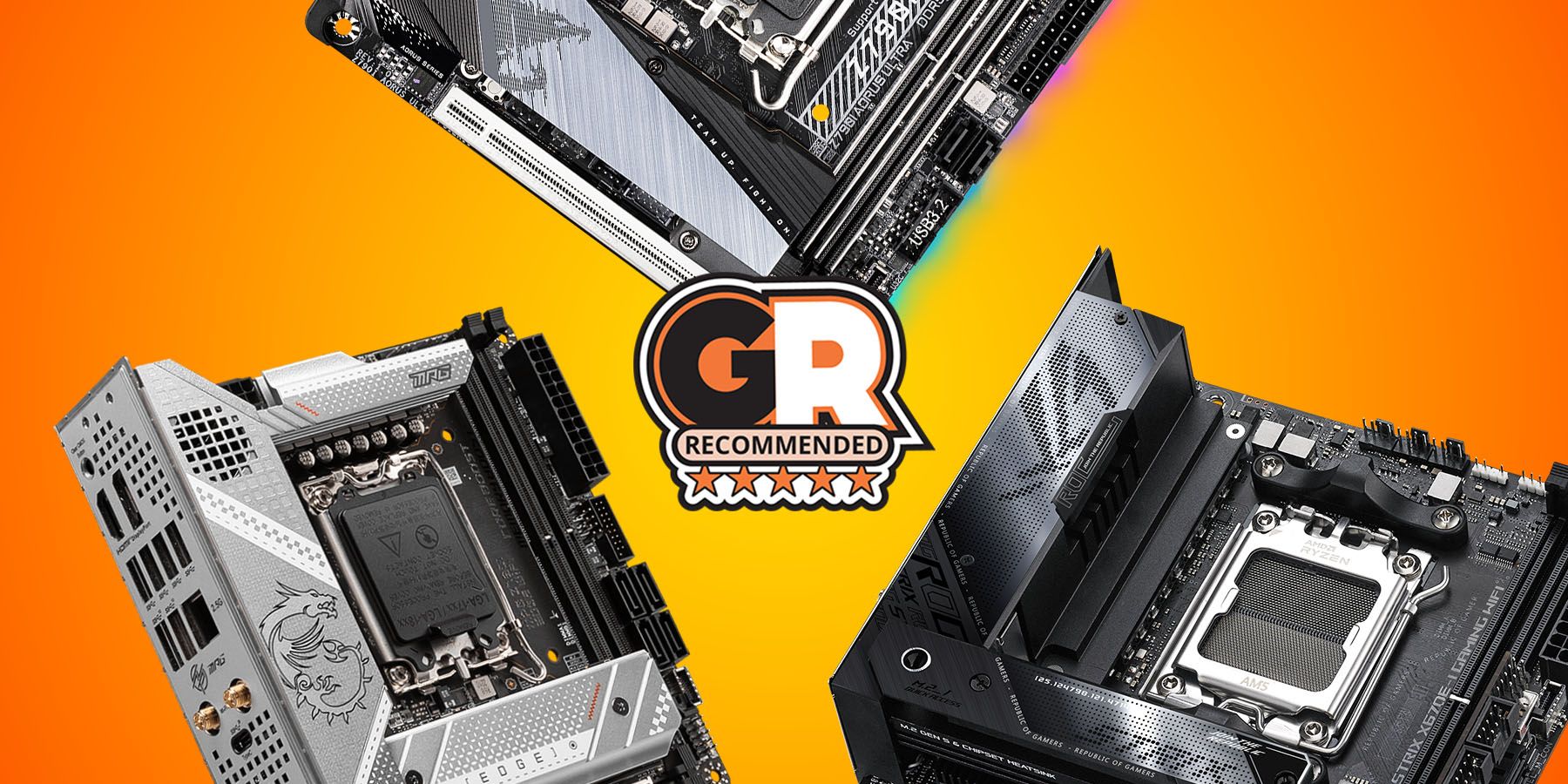
The Best Mini-ITX Motherboards for 2024
Mini-ITX motherboards are small, but they still pack a punch with unbelievable features that weren't possible a decade ago.
With the TUF B650 Plus Wi-Fi, users get a solid design that excels at cooling, thanks to the enlarged heatsinks over the VRM, which helps in stability. The board features a 12+2 power phase VRM to support overclocking of mid-range processors and can also handle the intermediate level of overclocking of higher-end chips like the 7900X or 3D chips. Wi-Fi 6, surround sound audio codec, fast USB Type C ports, and several PCI-E slots are among its notable features. Even though it lacks onboard troubleshooting features, a BIOS flashback button is available at the rear to upgrade the BIOS version.
ASUS has quite a few white motherboards across its three gaming brands, but the ASUS ROG Strix Z790-A Gaming Wi-Fi II strikes the perfect balance between price and aesthetics. Unlike the NZXT N7 where the PCB is covered with white paneling, the Strix Z790-A GAMING Wi-Fi II has white accents in just the right places, with the black PCB still exposed in some areas. It uses the LGA1700 socket, making it compatible with Intel Core processors from 12th Gen to 14th Gen.
There is a single PCIe 5.0 x16 slot for GPUs and a single M.2 SSD slot also compatible with PCIe 5.0, which is impressive considering the mid-range price point of this motherboard. For connectivity, gamers get Wi-Fi 7, Bluetooth 5.4, a 2.5G LAN port, and tonnes of USB ports, including three USB Type-C ports. Like other premium ASUS motherboards, the Strix Z790-A Gaming Wi-Fi II uses 5K black metallic capacitors, Q-release PCIe slots, heatsinks for the M.2 drives, as well as Clear CMOS and BIOS Flashback buttons.
There is no dearth of gaming motherboard options when it comes to the ITX form factor. ASUS has compact motherboards as part of its ROG series and Prime series. The ASUS ROG Strix B650E-I Gaming Wi-Fi is a powerful yet compact motherboard offering that will fit in even the smallest of PC cases. Despite its petite size, it features a 10+2+1 power phase design, making it fairly capable of overclocking as well as delivering consistent performance under constant load.
This AM5 socket motherboard is home to the latest Ryzen 7000 series CPUs and there is a single PCIe 5.0 x16 slot for connecting the latest GPUs. There are a total of two M.2 SSD slots, of which one is PCIe 5.0 compatible. Speaking of connectivity, the ROG Strix B650E-I Gaming Wi-Fi comes with 2.5G LAN, Wi-Fi 6E, and Bluetooth 5.2, along with ample USB ports, of which two are USB Type-C. Gamers can also make use of dual channel memory thanks to the two DIMM slots supporting a maximum of 96GB RAM.
The Strix B650E-I Gaming Wi-Fi has an all-black design with a shield for the I/O zone. There are no integrated LEDs in this panel, unlike some of the other ASUS offerings.
How to Find the Best ASUS Motherboard for Gaming
Finding the perfect ASUS motherboard for gaming involves several considerations including socket, connectivity, power delivery, upgrade options, and other features.
- Socket: The socket determines which CPUs one can use with a particular motherboard. Intel has been sticking with the same socket since its 12th Gen CPUs, which means those looking to upgrade from 12th Gen to 14th Gen can make use of their current motherboard. Intel names its sockets as LGA1700, LGA1200, among others. AMD, on the other hand, has moved from AM4 to AM5 for its Ryzen 7000 series processors but will stay with AM5 for its Ryzen 8000 series CPUs.
- Connectivity: Most modern gaming motherboards come with a lot of connectivity options. Networking is a big deal, and most mid-range to high-end motherboards now have Bluetooth, Wi-Fi, and Ethernet, making them ready to go right out of the box. But the quality of this can be very different from one motherboard to another. Some use basic solutions, while others have top-notch Ethernet and super-fast Wi-Fi 7. They can also support anywhere from 1 Gigabit to 10 Gigabit Ethernet.
- Power Delivery: Power delivery is extremely important for stability and the better the VRM will be, the easier it will be to maintain higher clock speeds and overclocking. Users should look for a combination of VRM made up of high-quality components and grooved heatsinks on top for continuous heat dissipation. It's essential to check the number of power phases if users are planning to overclock a mid-range or a high-end CPU. Not only overclocking but a solid power phase design is essential for consistent performance.
- Upgrade Options: Purchasing a gaming motherboard is a long-term investment. It depends on what upgrades they might do later. These could be new CPUs, the latest DDR5 memory, or PCIe Gen 5 SSDs and GPUs. Having an up-to-date motherboard helps with all these upgrades. A lot of motherboards come with PCIe 5.0 x16 slots for GPUs, but there are no GPUs that take advantage of the increased bandwidth yet.
- Extra Features: When it comes to gaming PCs, it's not just about making sure everything works together. Having a strong cooling system, hard drives, and room for more than one graphics card are awesome extras. RGB lighting, a screen that displays crucial stats, heatsinks for M.2 drives, and armored PCIe slots are some additional features that users may want.

The Best Gaming CPUs in 2024
The best CPUs for gaming have to stand out in an increasingly competitive space. These are the best you can buy right now.
FAQ
Q: Can these Asus motherboards connect to the internet wirelessly?
Whether your motherboard can connect wirelessly depends on its hardware specs. Look at the specs on the manufacturer's support site. If it mentions WLAN Chipsets, it has wireless. If it only mentions LAN, it means it only has an Ethernet port. This means one needs a separate wireless card or USB adapter.
Q: Is it necessary to use the exact RAM type mentioned in the Asus motherboard's specs?
It's not a must. Users should match the memory type (like DDR3 or DDR4), but the listed speed is more of a suggestion. Most times, as long as it's within reasonable limits, RAM with higher or lower speed can work with the motherboard's supported specs.
Q: Does one need to purchase an AMD graphics card for AMD-based Asus motherboards?
No, it's not necessary. Unlike CPUs, the graphics card doesn't have to match the motherboard's chipset perfectly. Use an NVIDIA graphics card with an AMD motherboard, as long as the motherboard meets the other needed specs of the graphics card.



